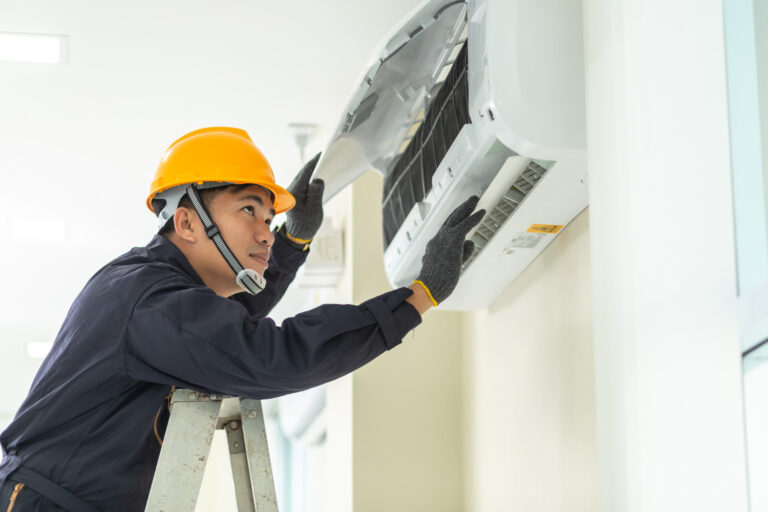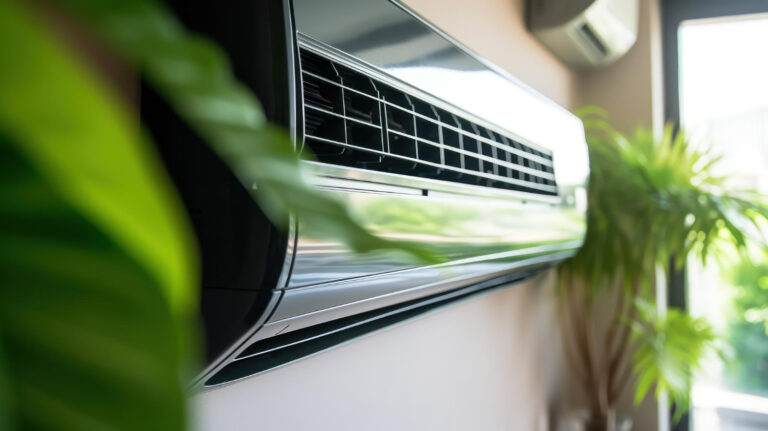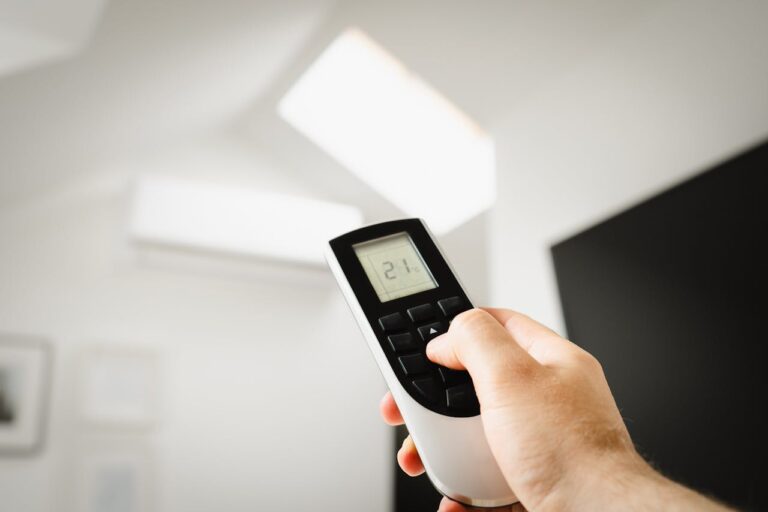Heat pump installation is a vital part of improving the energy efficiency and comfort of your home. Heat pumps offer a reliable method for heating and cooling, making them a smart choice for homeowners seeking to optimize their home’s climate control.
Understanding the Basics of Residential Heat Pump Systems
Components of a Heat Pump
A heat pump is made of several key parts. The primary components include the compressor, evaporator coil, condenser coil, and an expansion valve. The compressor increases the pressure of the refrigerant, which allows it to move heat more efficiently. The evaporator coil absorbs heat from the air inside your home, while the condenser coil releases this heat outside. The expansion valve reduces the pressure of the refrigerant, allowing it to absorb heat efficiently. All these parts work together to move heat in and out of your home.
How Heat Pumps Work
Heat pumps transfer heat from one place to another rather than generating heat directly. In heating mode, the system absorbs heat from the outdoor air or ground and moves it indoors. In cooling mode, it reverses the process, taking heat from inside your home and releasing it outside. This method makes heat pumps an efficient choice for both heating and cooling.
Types of Heat Pumps: Air Source vs. Ground Source
There are two main types of heat pumps: air source and ground source. Air source heat pumps take heat from the air outside and move it indoors. They are generally easier to install and cost less upfront. Ground source heat pumps, also known as geothermal heat pumps, extract heat from the ground. While installation is more complicated and expensive, ground source heat pumps are typically more efficient and have lower operating costs.
Benefits of Installing a Heat Pump in Your Home
Energy Efficiency
One of the most significant benefits of heat pumps is their energy efficiency. They use electricity to move heat rather than generate it, which requires less energy and results in lower utility bills. This efficiency is especially beneficial in homes looking to reduce energy consumption.
Environmental Impact
Heat pumps have a lower environmental impact compared to traditional heating systems. They use less energy and can be powered by renewable electricity. This feature makes heat pumps a more environmentally friendly option for both heating and cooling your home.
Cost Savings
Installing a heat pump can lead to substantial cost savings over time. While the initial investment might be higher than traditional systems, the reduced energy consumption translates into lower monthly utility bills. Over the lifespan of the system, these savings can add up significantly.
Comfort and Convenience
Heat pumps offer a high level of comfort and convenience. They provide consistent temperatures and can switch between heating and cooling modes automatically. This flexibility ensures that your home remains at a comfortable temperature year-round. Additionally, heat pumps often feature advanced controls and smart thermostats, making it easy to manage your home’s climate.
The Step-by-Step Process of Residential Heat Pump Installation
Initial Consultation and Assessment
The first step in the heat pump installation process involves a thorough consultation and assessment. Our professionals will visit your home to understand your specific heating and cooling needs. They will inspect your current system and evaluate factors like home size, insulation, and layout. This assessment is essential for planning a successful installation.
Sizing the Heat Pump for Your Home
Proper sizing is crucial for the efficiency and effectiveness of your heat pump. Our technicians use precise calculations to determine the appropriate size of the heat pump for your home. An undersized unit will struggle to maintain the desired temperature, while an oversized unit will cycle on and off too frequently, leading to increased wear and tear.
Choosing the Right Location for Installation
Selecting the optimal location for the heat pump is another critical step. Our professionals will choose a spot that allows for efficient operation and easy access for maintenance. For air source heat pumps, this often means placing the outdoor unit in a shaded area to improve performance. Ground source heat pumps will require locating the best placement for the underground loops.
Installation Procedures: What to Expect from Our Professionals
The actual installation process involves several steps. First, our technicians will set up the heat pump system and connect it to your home’s electrical and ductwork systems. They will then test the unit to ensure it functions correctly. The installation also includes setting up any necessary controls and thermostats. Our team takes care to minimize disruption to your home during this process.
System Testing and Commissioning
After the installation is complete, our professionals will conduct a series of tests to ensure the system is working as expected. They will check the refrigerant levels, verify the electrical connections, and test the heating and cooling modes. This commissioning process helps identify any potential issues and ensures your heat pump operates at peak efficiency from day one.
Post-Installation Maintenance and Heat Pump Services
Regular Maintenance Routines
To keep your heat pump running efficiently, regular maintenance is essential. Routine tasks include cleaning or replacing filters, checking refrigerant levels, and inspecting electrical connections. Our professionals will develop a maintenance schedule to ensure your system stays in good working condition. Regular maintenance not only extends the lifespan of your heat pump but also improves its performance.
Troubleshooting Common Issues
Heat pumps can encounter a range of issues over time. Common problems include refrigerant leaks, frozen coils, and unusual noises. Our technicians are experienced in diagnosing and fixing these problems quickly. If you notice any irregularities with your heat pump, it’s important to call our professionals for service promptly to prevent further damage.
When to Call Our Professionals for Service
Knowing when to call for professional service can save you time and money. If your heat pump isn’t heating or cooling effectively, if there are strange noises, or if your energy bills suddenly increase, it’s time to call us. Early intervention can prevent minor issues from becoming major problems.
Importance of Professional Maintenance
Professional maintenance is crucial for the longevity and efficiency of your heat pump. Our technicians have the expertise and tools to perform thorough inspections and repairs. Regular professional maintenance helps ensure your heat pump operates at maximum efficiency, providing reliable comfort for your home.
Warranty and Service Plans Offered by Greer's Banner Air of Bakersfield, Inc.
We offer comprehensive warranty and service plans to support the longevity of your heat pump. Our plans include regular maintenance visits, priority service, and discounts on repairs. Investing in a service plan provides peace of mind and ensures your system receives the care it needs.
Conclusion
Proper installation and maintenance of your heat pump system are vital for enjoying its many benefits. From the initial consultation and precise sizing to expert installation and ongoing maintenance, each step contributes to the efficiency and reliability of your heating and cooling system. A well-maintained heat pump can provide consistent comfort, reduce energy costs, and have a reduced environmental impact.
Greer’s Banner Air of Bakersfield, Inc. offers expert heat pump service in Bakersfield to ensure your system operates at peak performance. Contact us today to schedule a consultation or maintenance visit and experience the full benefits of a well-installed and maintained heat pump system!







